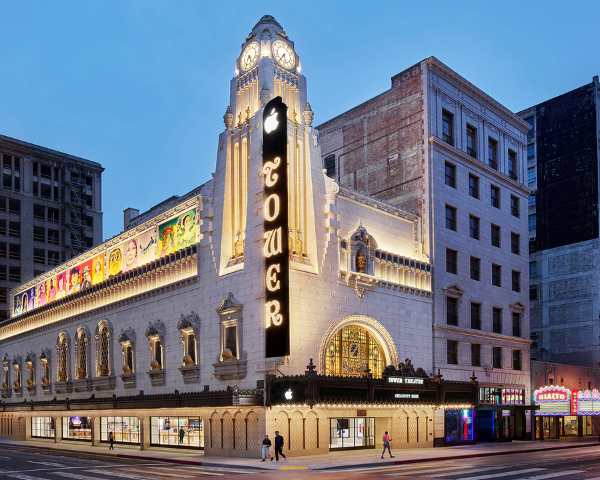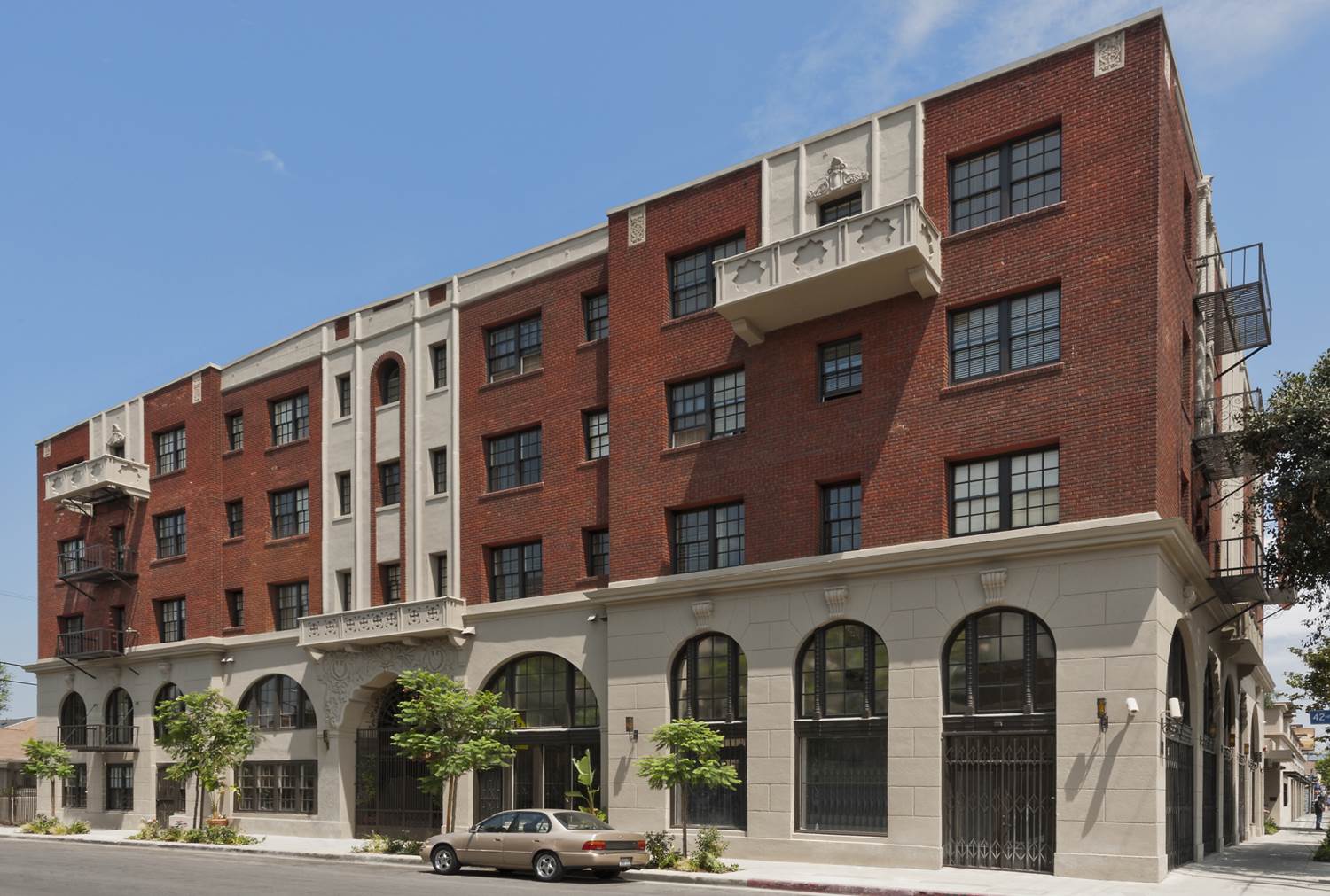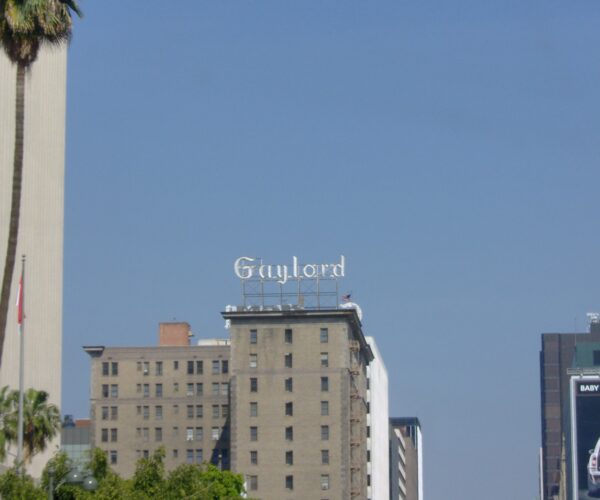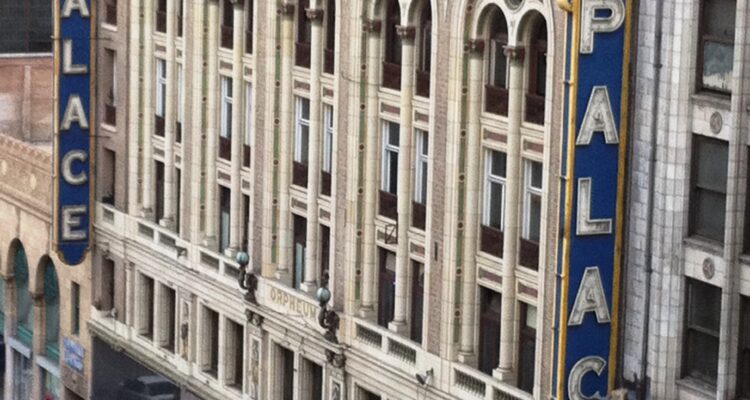
Place
Palace Theatre
The Palace opened in 1911 as the third home of the Orpheum vaudeville circuit in Los Angeles. It is one of the oldest theatres in Los Angeles and the oldest remaining original Orpheum theatre in the U.S.
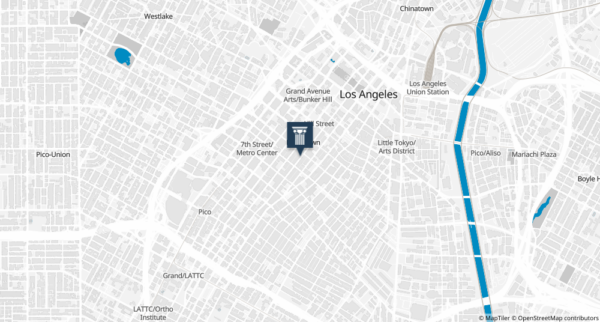
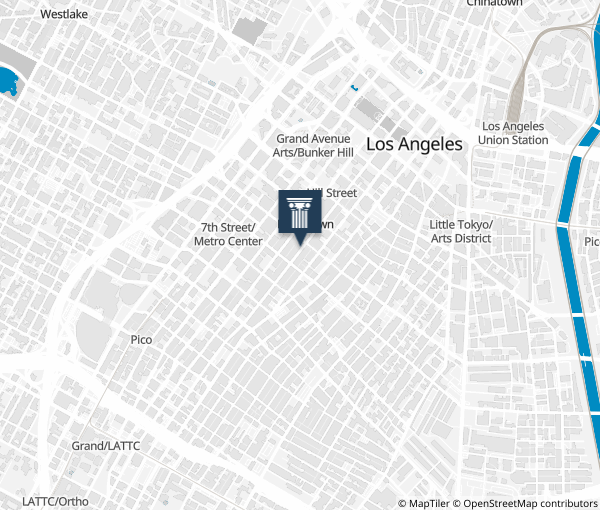
Place Details
Address
Get directions
Architect
Year
Style
Decade
Attributes
Community
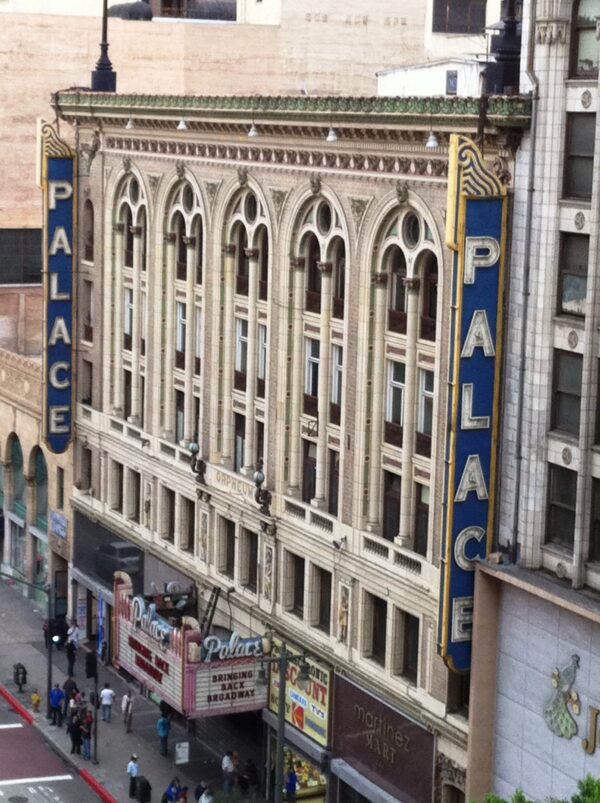
Photo by Adrian Scott Fine/Los Angeles Conservancy | Photo by Adrian Scott Fine/Los Angeles Conservancy
The Palace opened in 1911 as the third home of the Orpheum vaudeville circuit in Los Angeles.
It is one of the oldest theatres in Los Angeles and the oldest remaining original Orpheum theatre in the U.S.
It hosted many major stars early in its history, including Harry Houdini, Will Rogers, Fred Astaire, and a young Rita Hayworth. The greatest singers, dancers, comedians, acrobats, and animal acts in vaudeville performed here until 1926, when the Orpheum moved to its fourth and final location at Ninth Street and Broadway and the theatre was renamed the Palace.
The theatre was designed by G. Albert Lansburgh, one of the principal theatre architects in the west between 1909 and 1930. Lansburgh also designed the 1926 Orpheum theatre at 842 S. Broadway. In addition to commissions in Chicago, Kansas City, St. Louis and New Orleans, his works included the Warner Bros. Theatre Building in Hollywood (1927) and the interiors of the local Wiltern and El Capitan theatres.
Loosely styled after a Florentine early Renaissance palazzo, the façade of the Palace features multicolored terra-cotta swags, flowers, fairies, and theatrical masks illustrating the spirit of entertainment. Four panels depicting the muses of vaudeville — Song, Dance, Music, and Drama — were sculpted by noted Spanish sculptor Domingo Mora.
While the structure’s exterior displays Italian influences, its interior decoration is distinctly French, with garland-draped columns and a color scheme of pale pastels. The auditorium was designed with excellent acoustics for a pre-amplified age.
Although the original seating capacity neared 2,000, the intimate vertical design with two balconies ensured that no one was far from the stage. The original box seats were removed in the 1930s; the walls were plastered and painted over with massive murals by Candelario Rivas depicting pastoral scenes. The theatre now seats around 1,000.
The Conservancy does not own or operate the Palace Theatre. For any requests, please contact the Palace Theatre directly at (213) 629-2939.
